Blues Shuffling Patterns And Progressions In Different Keys
One of the most fundamental steps in learning to play blues guitar is understanding the shuffle. The characteristic signature of the shuffle is a long-short rhythmic pattern that cycles through an entire passage of music. Listen to the audio example below to get a feel for this.
This example is played in the key of A.
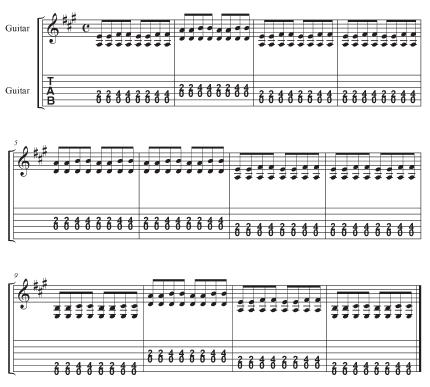
Download .mp3 file for audio example 3 ( Right-click Save Target as… )
Blues Shuffle In C
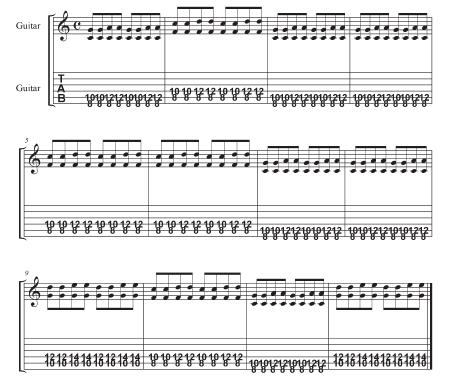
Download .mp3 file for audio example 9 ( Right-click Save Target as… )
For most beginners, the stretch on your left hand will be a little challenging to play in the A major example. That’s why I purposely chose the next example to be in the key of C where it is played higher up on the fretboard. Since the frets are relatively closer together, you shouldn’t have to stretch as hard to play it.
The fingering for each of these chords is exactly the same. Using the first chord as an example, the note on the 6th string, 8th fret, is played by the first finger. The note on the 5th, string 10th fret, is played by the third finger. The note on the 5th string, 12th fret is played by the fourth finger. Try not to lift your third finger off of the string when your fourth finger goes down.
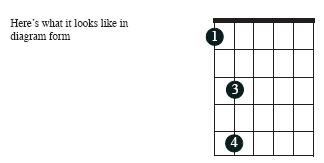
There is a back and forth motion between the third and fourth fingers. Listen to the audio to hear how it’s supposed to sound. Stretches like this get easier over time. So, hang in there and you will get used to it with some practice.
The next example is a shuffle in A. The stretch gets to be a little bigger because we are moving lower on the fretboard. Notice that just like the barre chord examples, the pattern stays the same. The I and the IV chord are in the same fret and the V chord is located two frets higher.
Blues Shuffle In A
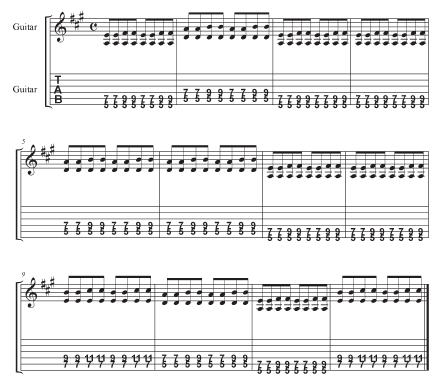
Download .mp3 file for audio example 10 ( Right-click Save Target as… )
Blues Shuffle In G
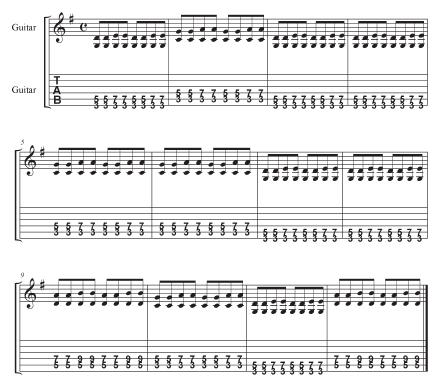
Download .mp3 file for audio example 11 ( Right-click Save Target as… )
So far, you had learned three examples of the shuffle with the root chord located on the sixth string. You should now be able to play a shuffle in any key with the root starting on the sixth string using some simple transposition. Now, let’s look at examples where the root (I) chord is played on the fifth string.
Blues Shuffle In E
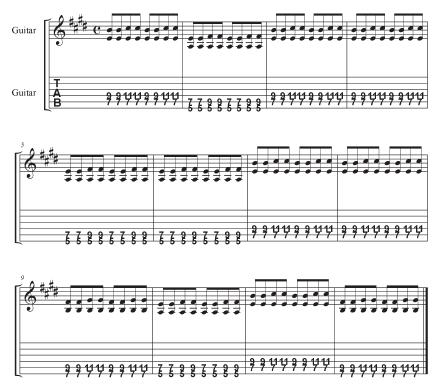 Download .mp3 file for audio example 12 ( Right-click Save Target as… )
Download .mp3 file for audio example 12 ( Right-click Save Target as… )
Take note of the pattern here. The 1 and 5 chords are in the same fret and the IV chord is two frets lower, just like the barre chords. Here’s one last example in the key of D.
Blues Shuffle In D
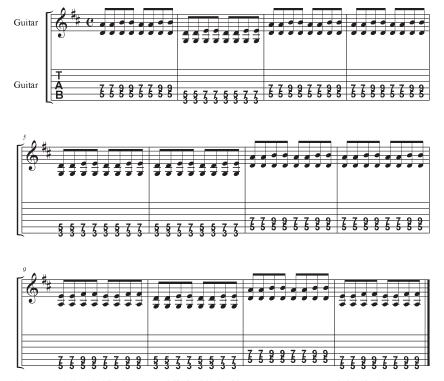
Download .mp3 file for audio example 13 ( Right-click Save Target as… )
With all the examples above, that should give enough exercises to experiment and play the shuffle in any key. As always, practice at a slow tempo and gradually speed up as you get more confident.
The Easiest System to Learn The Blues
If you always wanted to jam along to the blues and want to learn some neat tricks and improvisation techniques, check out Blues Jam Session today!
For a limited time, you get 3 extra super bonuses! Click here for more details…







Leave A Comment